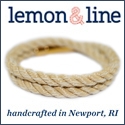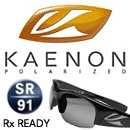
|
|
|
Scuttlebutt News: How The Transpac 52 Came To Be by Bill Lee, June 2001 In 1999, a yachtsman named Don Clothier raced a Lidgard 45 performance cruiser to Honolulu and did a great job. He was the first boat of its type to finish, but didn’t get much of a trophy. As a result, he donated a trophy to Transpac for the “First 50 footer to finish” To a yacht designer like myself, what does this mean? Open 50’s are the fastest known 50 foot monohull and with no sail area restrictions, they would make great boats for this trophy. Open 50s are most clearly a horse for a very specific course. That course being single handed around the world, so the realities of the Southern Ocean and of how much sail one person can really handle become de facto sail area limits. But take away the Southern Ocean and allow a full crew. With no sail area limits in the Open 50 rule and the reasonably easy conditions of the downwind course in the Eastern Pacific, disproportionately large sail area would be encouraged to the point of the boat having little other useful purpose. Also being a director of Transpac, I had to put on my other hat and ask if this is what Transpac really wanted. We knew we wanted to create an exciting, but smaller class to compliment the 75 footers that race for the barn door, but we just didn’t know if this was it. We talked about using the same IMS/TPYC rating limit system we use for the line honours boats to create a level class around 50 feet. While that had potential, Commodore Sandy Martin asked for more choices. To further these ends he appointed a seven person committee of Alan Andrews, Jerry Montgomery, Dan Nowlan, Jim Pugh, Greg Stewart, Bill Lee and himself. We started to look at what is commonly nicknamed a “Box” rule. C class catamarans are probably the best example of a box rule. The maximum length is 25 feet and the maximum beam is 14 foot. The crew is 2, no more no less, and the maximum sail area is 300 square feet including spars. No other rules. There is no credit for being less than the factors and no formula for trading the various factors. The boat either meets all the limits of the box or it doesn’t. This system is VERY type forming, but if one looks at the other rules, they are all somewhat type forming and the best racing usually occurs after the type forming has taken place. So a box rule short cuts the process of finding the proportions that fit the rule best. A box rule can also be very simple with lots of latitude for designers. Also there is no chance finding out later that the boat is the wrong length for the rule. There is another benefit of box rules. In a rule where length, sail area, displacement, stability and the other factors are traded, an effort is made to see that they are traded in proportion to their value in producing boatspeed. The ultimate optimization of these factors usually results in a boat that can win under the rule, but is less exciting and fun to sail relative to what it could be. Also, the designers job become one of trading the “go slow” factors against the “go fast” factors, whereas under a box rule, the designer only has “go fast” factors to work with. If one looks at the history of boats developed to the various rules, fun sailing downwind is seldom part of the end product. Even the last of the Whitbread maxis under the IOR 70 were more ships than race boats. They were long for the rule, heavy, and had lots of sail area. But they were not sporty to sail. A box rule permits abandoning the concept that the factors should be traded in proportion to their relative effectiveness. It permits building into the rule, more sail area, lighter displacement, more stability and better wetted surface to sail area ratios than what is normally optimum under the trading rules. This yields a boat with excellent performance and also one which is feels more powered up in a wide range of conditions. A box rule can be tweaked to make a boat easier and more fun to sail. We started putting together a 50 foot set of limits, but as we talked, it became obvious that the new 52 foot Pendragon IV, designed by Laurie Davidson was the perfect example of what we were looking for. She was designed to be a fun, fast, easy to handle, non rating rule boat. In fact about the only rule the owner laid down was that his new boat could not exceed the 52 foot limit for Marina Del Rey “Beer Can” racing. The new Transpac 41/52 system is like the Volvo 60 rule in many respects. It includes one design spar dimensions, sail area limits, a minimum displacement, and of course a maximum length. We thought about putting end shape factors into the rule to keep the stern from getting too wide and to give some nice appearance to the bow. But because there is no way to do this perfectly and because we wanted a higher level of simplicity, we just decided to let the designers optimize within the 52 feet length limit as they see fit with no artificial end shape constraints from the rule makers. We thought about putting a righting moment or center of gravity limit, but those just encourage inside ballast and we all know the best place for the lead is on the bottom of the keel. For safety we required the boats meet Category 1 of the ORC Special Regulations and that they be self righting from 125 degrees calculated by the IMS flat deck method. The minimum accommodations for racing yachts also applies. Lastly, we said NO RUNNERS. More masts are probably lost by operator error on the runners than by any other cause. Yes runners are a speed producing factor, but how much speed in relations to the hassle. If no one has runners, everyone is just equal about ¼ second per mile slower. And no slower once the wind comes aft. The Commodore also asked us to put in a smaller size which we did with 41 footers. The 41 footer box is almost he same except that we allowed 1080 pounds of water ballast. This is not a large amount of water ballast. It is really intended to make up the difference between an inshore crew and a smaller offshore crew so the boat can be reasonably powered up with a smaller crew on board. Also with regard to movable ballast, Transpac has worked hard to allow boats with movable ballast to enter and to rate them realistically relative to the rest of the fleet. Lastly with the 50 foot length slot again available, there is a place for Open 50’s to enter. If several enter that class can be nicknamed “First 50 footer to finish, safety rules only” Transpac is one of the few races that has so much downwind that it becomes 90% of the focus. I have sailed 6 Transpacs and twice, we set the spinnaker within the first 24 hours and then sailed the balance of the 2225 miles with a spinnaker set. 2000 miles of running in the trades is bound to call for very large downwind sail area and also unique jibing methods. It has already been discussed that shorter poles would be better suited for inshore racing. We have had a lot of interest in these Transpac 52’s and much of that interest has come from non Transpac racers. This is partly from the hole left from the great days of the IOR level racing. There have been efforts at "almost one design, but you can bring your own designer and builder", but none have matched the success of the later days of the IOR. Today with all of the computing power available now, any rule that tries to rate too many things or allows complex trading of the inputs, is simply not sufficiently bullet proof for the hardest hitters in the development game. Box rule racing is LEVEL racing and similar to ONE DESIGN racing but it is not ONE DESIGN racing. People try to call it ONE DESIGN, but they are missing an important distinction. Both race without time allowance, but much is the similarity ends there. In ONE DESIGN racing, the objective is that the boats are sufficiently identical that the racing is solely a test of sailing skill and sail making. Lasers are so tight in one design, that even the sails are one design such that the only remaining variable is sailing skill. In LEVEL racing, boat design is allowed as third variable to skill and sails, and if your boat is off the pace, you can change keels or hull shape or whatever you choose within the confines of the box to increase your performance. But what happened to the trophy. The donor of the trophy was not focused on this type of race boat, but rather on a more gentlemanly type of racing. Hence the Don Clothier trophy will be awarded to the first racer/cruiser under 49 feet to finish. Even if his idea sent us in a different direction than he intended, he was the spark plug that got us going. Click here for TP52 class website. ++++++++++++++++++++++++++++++++++++++++++++ Bill Lee Wizard Yachts Ltd 345 Lake Ave, Suite G Santa Cruz, CA 95062 831 476 9639 office 831 476 0141 fax 831 345 5542 cell wizard@fastisfun.com www.fastisfun.com |







|

